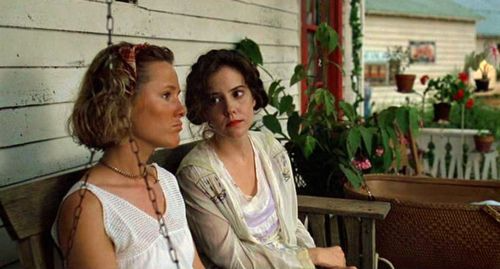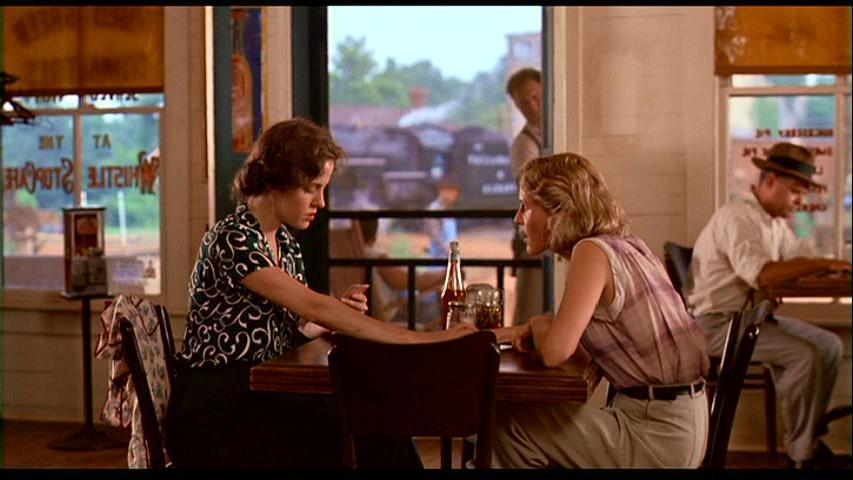
If you’ve ever read Fried Green Tomatoes at the Whistle Stop Café or watched the movie, you’ve probably asked yourself: were Idgie Threadgoode and Ruth Jamison just best friends, or were they secretly in love? Their connection runs so deep and genuine that it blurs the line between friendship and romance. Let’s take a closer look at the love story that’s captured hearts for decades.
Who Are Idgie and Ruth?
Idgie Threadgoode is the wild, fearless tomboy from Whistle Stop, Alabama. She speaks her mind, breaks every rule, and lives life on her own terms. Ruth Jamison is her opposite — gentle, polite, and graceful. When Ruth enters Idgie’s life, they form a bond that transforms them both forever. Together they run a café, raise a child, and create a life built on loyalty and love.
Life in the Deep South
To understand their relationship, we have to look at the time and place they lived in. The American South during the 1920s and 1930s was deeply traditional. Two women building a home together would have raised eyebrows, so love like theirs had to stay unspoken. That silence makes their story even more powerful — their affection shines through what they do, not what they say.

The Power of Their Bond
From the start, Idgie and Ruth’s connection feels stronger than friendship. Idgie risks her life to save Ruth from an abusive marriage. Ruth brings warmth and peace to Idgie’s restless spirit. They build a family together and care for each other as partners would. Their love is expressed through actions — devotion, sacrifice, and absolute loyalty.
The Symbolism of Bees and Honey
One of the most iconic scenes shows Idgie charming bees to collect honey while Ruth watches in awe. It’s more than a daring stunt — it’s a symbol of their relationship. The bees represent danger, the honey represents love, and Idgie’s fearlessness mirrors her willingness to take risks for Ruth. It’s tender, intimate, and symbolic of a love that’s both sweet and daring.
The Film’s Subtle Portrayal
When the movie Fried Green Tomatoes was released in 1991, the relationship was portrayed with subtlety. The film focused on their emotional connection without explicitly labeling it romantic. Still, the looks, the touches, and the quiet moments said everything. Even without words, the chemistry between them is undeniable.
Why Many Believe They Were Lovers
Many fans and readers feel certain that Idgie and Ruth’s relationship was romantic. They share a home, raise a child, and dedicate their lives to one another. Their affection goes far beyond friendship — it’s a love story that never needed to be defined. Their connection defies social norms but never apologizes for existing.
Why Some See Them as Friends
Of course, not everyone agrees. Some interpret their bond as a profound friendship — a kind of sisterhood that’s rare and unbreakable. During that time, women often relied on one another for emotional and practical support. Their relationship can be seen as an example of pure, unconditional friendship between two strong women.
A Love Hidden in Plain Sight
Because open discussions of same-sex love were taboo, Idgie and Ruth’s affection had to be expressed in coded ways — through shared glances, caring gestures, and lifelong commitment. Their story shows how love can thrive even when society refuses to name it.
The Emotional Core of Their Story
At its heart, Fried Green Tomatoes is about love that transforms and redeems. Ruth gives Idgie stability and purpose, while Idgie gives Ruth safety and freedom. Together, they build a world where they belong — one defined by kindness, laughter, and quiet courage.
Ruth’s Death and Idgie’s Enduring Love
When Ruth falls ill, Idgie stays by her side until the very end. After Ruth’s death, Idgie’s love remains unchanged. The message left on Ruth’s grave — “I will always love you — The Bee Charmer” — speaks louder than any confession ever could. It’s a love that lasts beyond life itself.
A Queer Reading of Their Story
Today, many readers see Idgie and Ruth as early representations of queer love in literature. Idgie’s non-conformity, her protective nature, and her devotion to Ruth all suggest a love that transcends friendship. The story doesn’t need explicit romance scenes to show their connection — it’s all there in the emotion, the sacrifice, and the lifelong devotion.
The Power of Female Connection
Even if one reads their story as friendship, it remains revolutionary. It celebrates the strength of women supporting each other in a world that often limits them. Whether romantic or platonic, their bond challenges stereotypes about how women can love and care for one another.
Were Idgie and Ruth Lovers?
So, were they lovers? Many believe so — and the evidence in their actions supports it. But maybe that’s the beauty of their story: it doesn’t need to fit a label. What matters is that they chose each other completely. Their love, in whatever form, was real, brave, and lasting.
Conclusion
The relationship between Idgie and Ruth is one of the most tender and memorable in modern literature. It’s a story of love that defied convention, endured tragedy, and left a legacy of courage and devotion. Whether you see them as lovers, best friends, or soulmates, their story reminds us that love doesn’t need permission — it simply needs truth.
FAQs
Were Idgie and Ruth based on real people?
There’s no clear answer, but it’s believed the author drew inspiration from real women she admired for their independence and strength.
Did the author intend them to be lovers?
Fannie Flagg never gave a definitive answer. She wanted readers to interpret their bond through their own understanding of love.
Why didn’t the movie show them as romantic partners?
During the early 1990s, Hollywood avoided direct depictions of same-sex relationships. The film chose subtlety, allowing viewers to read between the lines.
What does “Bee Charmer” mean?
It’s Ruth’s nickname for Idgie — symbolizing her courage, charm, and the sweet but risky nature of their love.
What makes their story timeless?
It’s a celebration of loyalty, courage, and love that transcends labels. Idgie and Ruth show that true connection doesn’t fit neatly into boxes — it simply exists, fierce and pure.
